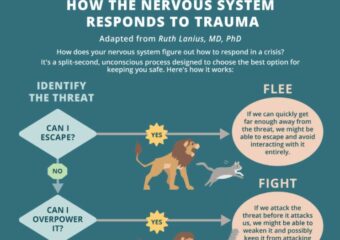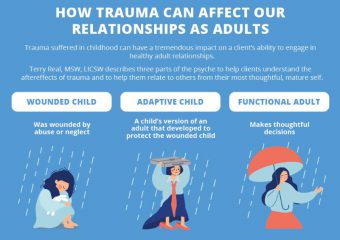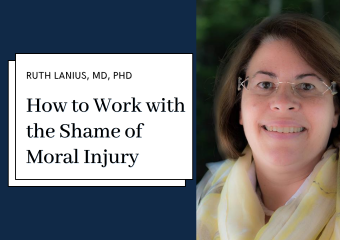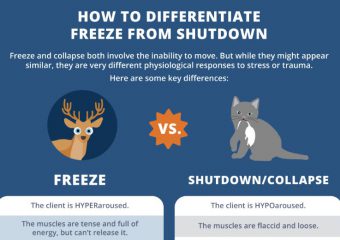It can often be difficult for trauma survivors to understand how or why they reacted a certain way during a traumatic experience. Instead of seeing their trauma response as the result of a split-second, unconscious decision made by their nervous system, your client may blame themself for not reacting differently. This can be especially true […]
Treating Trauma in 141 Countries
Now that we’ve wrapped up the Advanced Master Program on the Treatment of Trauma, I’d like to take a moment to thank you again for tuning in. We believe the leading research and developments on trauma treatment are so important. That’s why we made it our mission to make this program available to as many […]
[Infographic] How Trauma Can Affect Adult Relationships
Left untreated, childhood trauma can reverberate through adult relationships and make it difficult for your client to get close to other people. But Terry Real, MSW, LICSW has a way of thinking about the psyche that can help clients understand the aftereffects of trauma . . . . . . and help practitioners retarget their […]
Treating Trauma: How to Work with the Shame of Moral Injury
When a client experiences a moral injury, the guilt, sadness, and shame that come with it can be debilitating. It can create a deep wound at the center of a person’s identity. So how can you help a client who’s suffering from a moral injury begin to heal? In the video below, Ruth Lanius, MD, […]
[Infographic] How to Differentiate Between the Freeze and Shutdown Trauma Responses
The freeze and shutdown responses to trauma can resemble each other . . . . . . but they are very different in terms of what’s happening in your client’s brain, body, and nervous system. And that means they require different grounding strategies as well. In this infographic, we lay out some key cues to […]




